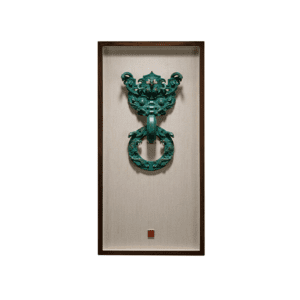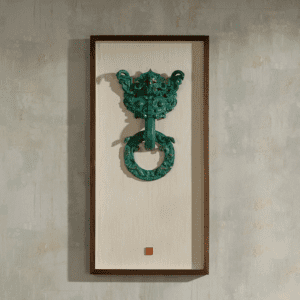Knock, knock, knock—let's ring the largest bronze doorbell of the Warring States period together.
Over 2,000 years ago,
What was the first thing you needed to do to enter the Yan Kingdom’s palace?
Three highlights to help you understand.
Warring States Period Openwork Bronze Door Knocker with Dragon and Phoenix Patterns
Knock, knock, knock
ring the largest bronze doorbell of the Warring States period
This bronze artifact looks a bit unusual—
a mythical beast gripping a ring in its mouth,
with its whiskers curling upward.
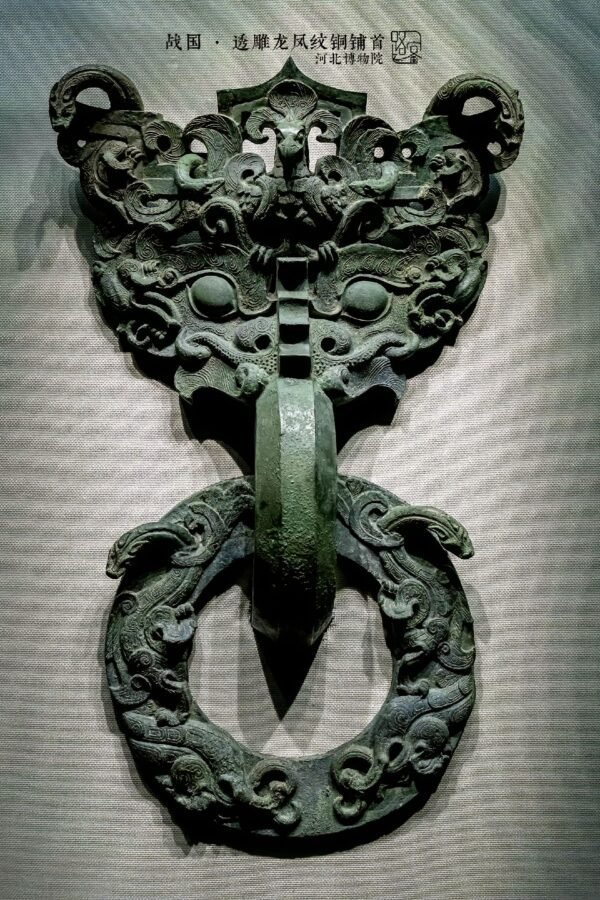
It originates from over 2,000 years ago, during the Warring States period,
belonging to one of the Seven Warring States—Yan.
Called a “door knocker” or Pùshǒu,
it combines practicality, decoration, and a symbol of status.
Used to open or knock on doors,
it is what we commonly refer to as a “door ring.”
Pùshǒu is typically crafted in the shape of a beast’s face,
hung on grand doors to convey blessings and ward off evil spirits.

In 1966, the pierced bronze door knocker featuring dragon and phoenix patterns was unearthed at the Laomutai site of the Yanxia Capital Ruins.
Experts speculate that it once adorned the grand gates of the Yanxia Capital’s palace.
According to Records of the Grand Historian (Shiji), King Wu of Zhou conquered King Zhou of Shang and granted the land of Yan to Duke Zhao. The capital of the Yan Kingdom was initially located in “Ji,” referred to as the “Upper Capital,” near present-day Beijing. Later, Yan established a military stronghold in Yixian County, Hebei, known as the “Lower Capital.”
What you imagine it to be:
Delicate, small, and adorable.
What it actually is:
Massive in size and weight, far exceeding expectations.
This door knocker is the largest surviving bronze door knocker from the Warring States period.
It is also the largest bronze palace door knocker in China.

Knock, knock, knock—using the bronze ring to strike the heavy palace door.
This doorbell, crafted in the State of Yan during the Warring States period, still “rings loud and clear” with a deep and resonant sound, powered for over two thousand years.
Inside this ancient doorbell lives a “foodie beast.”
The Dragon and Phoenix Patterned Openwork Bronze Door Knocker combines relief carving, openwork, and incised engraving techniques, showcasing exceptional craftsmanship.

With delicate lines and exquisite craftsmanship, the design of this door knocker incorporates a fusion of various mythical creatures, in addition to the phoenix standing with outstretched wings.
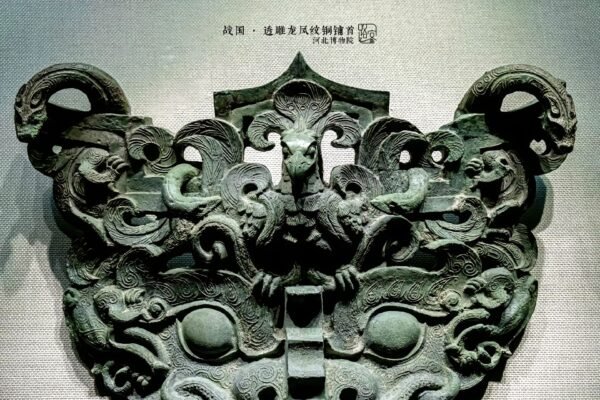
Tortuous Climbing Dragon
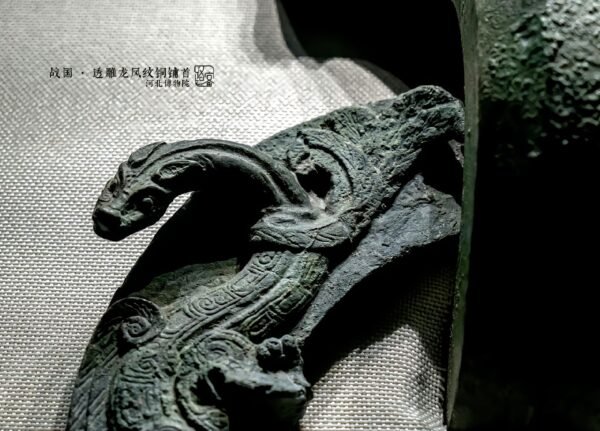
The largest resident in this doorbell is a gluttonous little monster with a huge appetite –
the Taotie (tāo tiè).
It has broad eyebrows, a wide nose, round eyes with a fierce gaze, two sharp teeth protruding from its lips, and two thick whiskers with downward-curving tips.
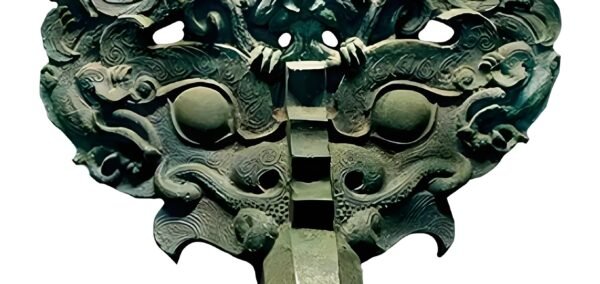
The Taotie, also known as Lao Tao or Pao Xiao (páo xiāo), is a fierce beast in ancient Chinese mythology.
It is recorded in both “Shan Hai Jing” and “Zuo Zhuan“. According to “Shan Hai Jing”, the Taotie has the body of a sheep and the face of a human, with its eyes under its arms, tiger-like teeth, human-like claws, and a voice like a baby.
“Zuo Zhuan” annotates that being greedy for wealth is called Tao, while being greedy for food is called Tie.
With a fierce appearance and an insatiable appetite, the Taotie is often depicted as enjoying its food immensely.
In the “Sheng’an Waiji” of the Ming Dynasty, it is stated that the Taotie loves food, so it is depicted on the lid of cauldrons. The image of the Taotie is also frequently used in the casting of bronze ware such as cauldrons, ritual wine vessels, and gongs.


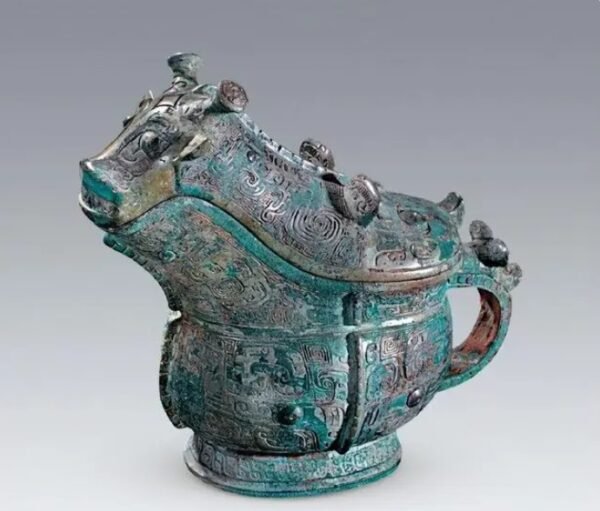
The little “doorbell” has remained unchanged for more than two thousand years.
The history of Pú Shǒu (door knockers) is long and illustrious.
By the Western Han Dynasty, door knockers were already widely used on grand entrances.
In The Book of Han: Annals of Emperor Ai, it is recorded:
“The bronze turtle and snake door knocker on the hall door of Emperor Xiaoyuan’s temple resounded.”
Sima Xiangru’s Ode to the Long Gate also vividly describes the Pú Shǒu:
“Pushing the jade door to strike the golden knocker, its sound resonated like the toll of a bell.”
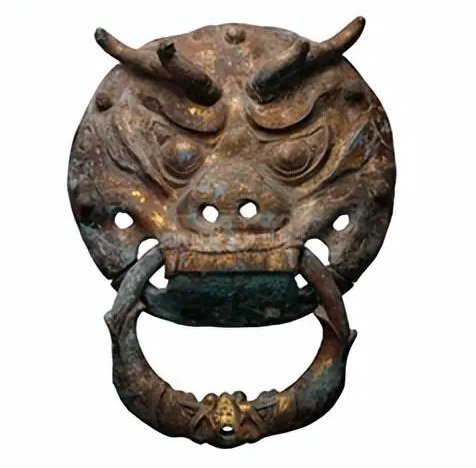
After the Han Dynasty, the form of Pu Shou did not change much and has been inherited to this day
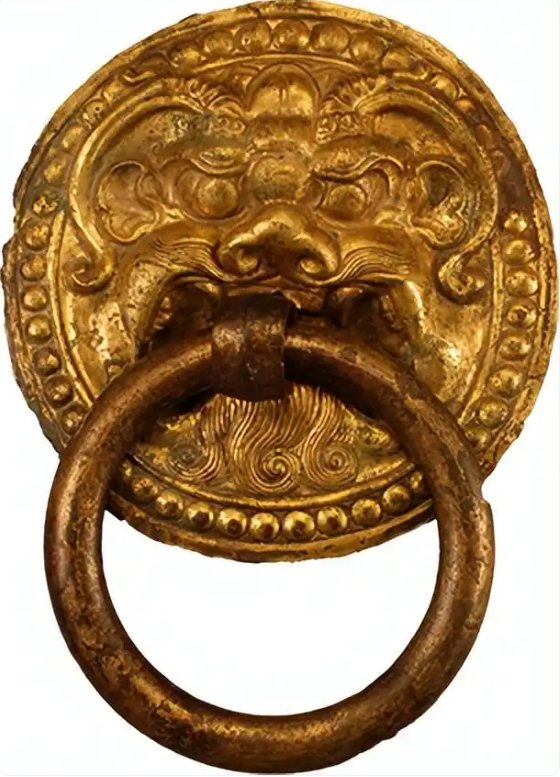
It is both cute and practical, with a beautiful symbolism. The sound of knocking on the openwork dragon and phoenix pattern copper Pu Shou resonates with a unique history of architectural decoration.


